Last Chance to Catch NYC's Holiday Notalgia Train
We met the voices of the NYC subway on our nostalgia ride this weekend!


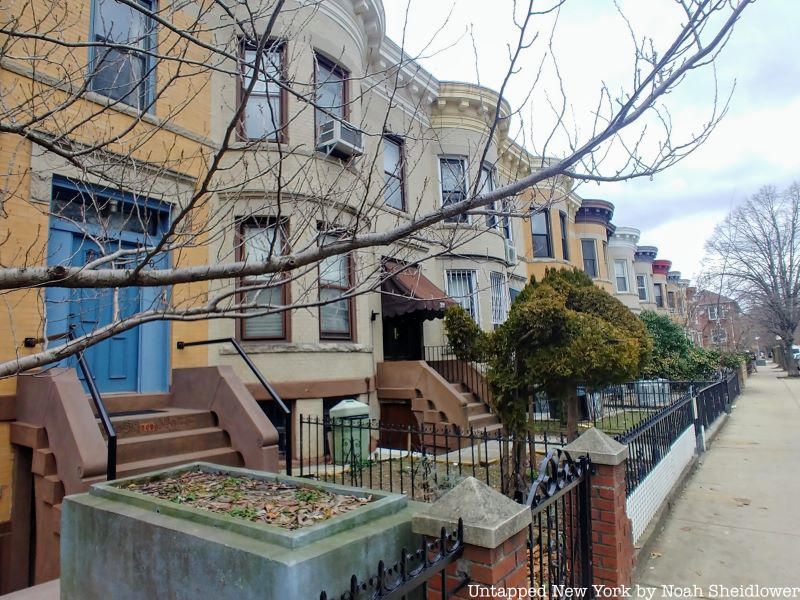
Kensington may be one of the more obscure neighborhoods of Brooklyn, though its diversity, historic architecture, and horses have many stories to tell. Wedged between Flatbush, Prospect Park, and Borough Park, the neighborhood is predominantly residential, with most commerce appearing e on Church Avenue, Coney Island Avenue, and parts of Ocean Parkway. Though gentrification has made its way to Kensington, the area remains one of the more inexpensive rental markets, maintaining much of its historic architecture and character as demographics continue to shift. Here are the top 10 secrets of Kensington, Brooklyn!

The Prospect Park Stable, located at 55 Caton Place, is the last remnant of a public horse riding stable from the early 20th century. The stable was built as an extension of a main facility at 11 Ocean Parkway in Windsor Terrace on the border of Kensington. Prospect Park was designed by Olmsted and Vaux to accommodate horses, as evidenced by bridle paths and carriage drives. Adolph Vogt ran the riding academy at the park and served as the proprietor of the Bedford Riding Academy. Because of the growth of automobiles, Bedford Avenue in nearby Crown Heights became off-limits to horse riding. Vogt found a new site in Windsor Terrace at 11-27 Ocean Parkway. The stable at 55 Caton is the last remnant of Vogt’s stable while other parts of the former site have been repurposed for the the East 8th Street footbridge, an indoor roller rink, warehouse, and 8-story residential building.
Prospect Park Stable is now the only remaining stable in the Prospect Park area, the only centrally located stable in Brooklyn, and the only stable accessible by mass transit in New York City. Old Belgian block peeks out from beneath the street pavement. There is a small arena inside as well as an outdoor space at the back of the Stables. Horses can be seen walking near the surrounding streets en route to the Prospect Park Bridle Path.
The stable got new owners in 2018, John Quadrozzi Jr. and daughter Xiana. The Quadrozzi’s performed major renovations to the dilapidated structure and Xiana created horse care and riding programs educated by her attendance at Centenary University’s Equine Studies program. Be•Brooklyn equine is the operating entity conducting youth after-school, summer, and adult program as well as traditional pony rides for youngsters. Helping Hoof, Inc., a new not-for-profit, helps make riding accessible for the physically, emotionally, socially, and economically challenged.
The non-profit also aids in the restoration, enhancements, and signage updates of Prospect Park’s bridle path and riding ring, making it safer for horses and humans. The efforts of the non-profit also call attention to horse riding’s historical prominence in the area. To enhance the stable’s historic relevance to the Park, a new antique style paint-on-brick sign spans proudly across the stable’s entrances with an artist’s rendering of the grandiose Horse Tamer statues at Prospect Park’s Parkside Circle entrances, where Prospect Park Stable horses accessed the Park for over 100 years. Construction of a stable cafe is underway and there are plans to dedicare an entire floor to an indoor arena, and other floors for commercial uses to make the stable economically sustainable.
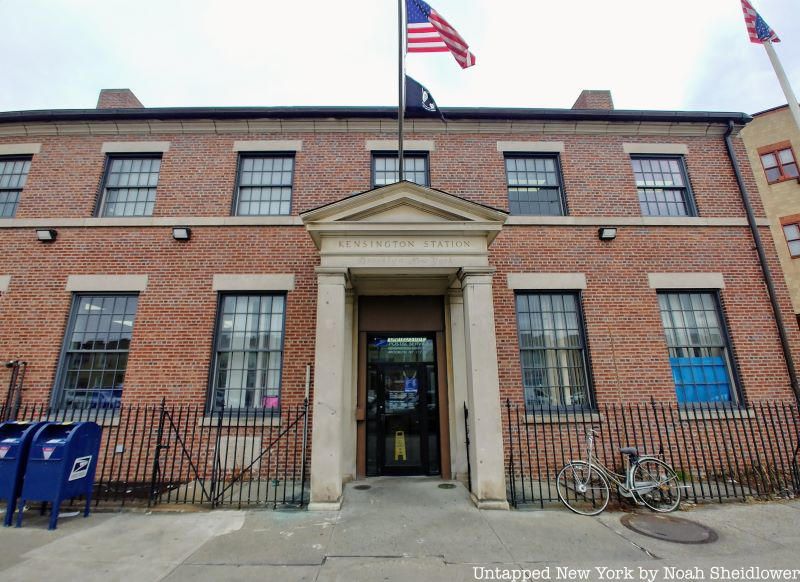
The Kensington Post Office is a historic post office in Kensington and is one of just three buildings in the neighborhood listed on the National Register of Historic Places. Located at 419 McDonald Avenue, the building was constructed in 1935 in the Colonial Revival style. It was built by the Office of the Supervising Architect, with architect Lorimer Rich designing the two-story Federal-style brick building.
Rich is known for collaborating with sculptor Thomas Hudson Jones on the winning entry in the national design competition for Arlington National Cemetery’s Tomb of the Unknown Soldier. Rich also designed post offices in Williamsburg, Madison Square, and Forest Hills. The post office was painted white for much of its history, though it now showcases an ornate brick facade and a portico supported by Doric piers. The post office was added to the National Register of Historic Places in 1988.
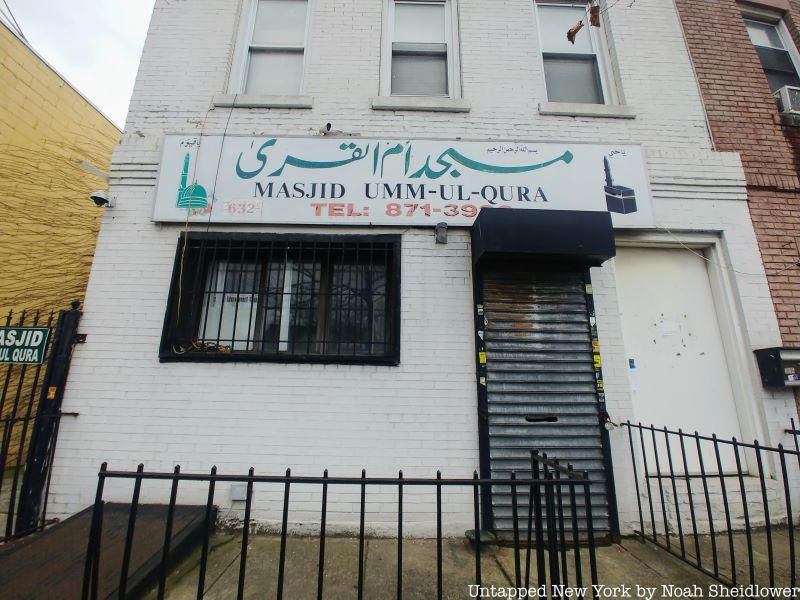
The largest Pakistani population in New York City is located near Coney Island Avenue in Kensington. Before a large wave of Pakistani migration in the 1990s, this area was primarily Jewish (there remains a large Jewish population in Kensington along Ocean Parkway). The number of Pakistanis in Brooklyn was roughly 9,903 in 2010, though Little Pakistan suffered after 9/11 when agencies came in looking for suspicious activities and incite fear among residents. As a result, business in Little Pakistan dropped by as much as 50%. At the peak of this time, 20,000 members of Brooklyn’s Pakistani population left the United States.
Since then, the area has recovered and is now filled with Pakistani restaurants, salons, and jewelry shops. Today, Little Pakistan is mainly concentrated between Church Avenue and Avenue H in Kensington and parts of Flatbush. One of the classic Pakistani spots is Lahori Chilli Restaurant & Sweets, which serves up classics like haleem, a savory porridge, chicken and lamb pulao, and a stew called nihari. Down the street is Jalsa Grill & Gravy, which serves Indian, Pakistani, and Bangladeshi classics. A handful of restaurants offer a selection of savory and sweet goods like jalebi, such as Mashallah, Shandar Sweets & Restaurant, and Abdullah Sweets and Restaurant. There are also a handful of clothing stores that sell items like salwar kameez, kurta, and headpieces.
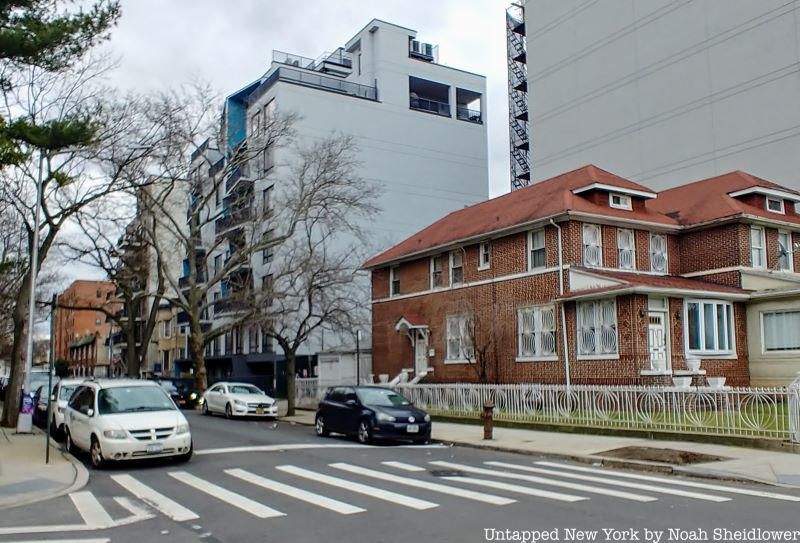
Parkville is a micro-neighborhood of Kensington that has long confused some locals. Parkville stretches from 18th Avenue to Foster Avenue, though it breaks from the grid system of the rest of Kensington. Parkville’s streets are distinctively diagonal. A librarian at the Brooklyn Public Library. described the streets as “peculiar” and “wonky.” The numbered streets continue on the other side of Parkville as though Parkville’s diagonal streets were imposed over years later. Parkville was established after the construction of the Coney Island Plank Road, which opened in 1850 and was graded in 1860.
The community was originally called Greenville and was purchased by the Freeman’s Association in 1852. The neighborhood constructed a public school in the 1870s, as well as St. Rose of Lima church which still is open today (and was where Mary Tyler Moore attended Sunday school). The Brooklyn Public Library article outlines a number of rather disturbing events in Parkville, such as the death of hotel owner Mortimer Tunison and the tragic demise of Mabel Robinson at Tunison’s hotel. Today, Parkville is home to quite a few Pakistani and Mexican eateries, a Tashkent Supermarket location, and community gardens including Newkirk.
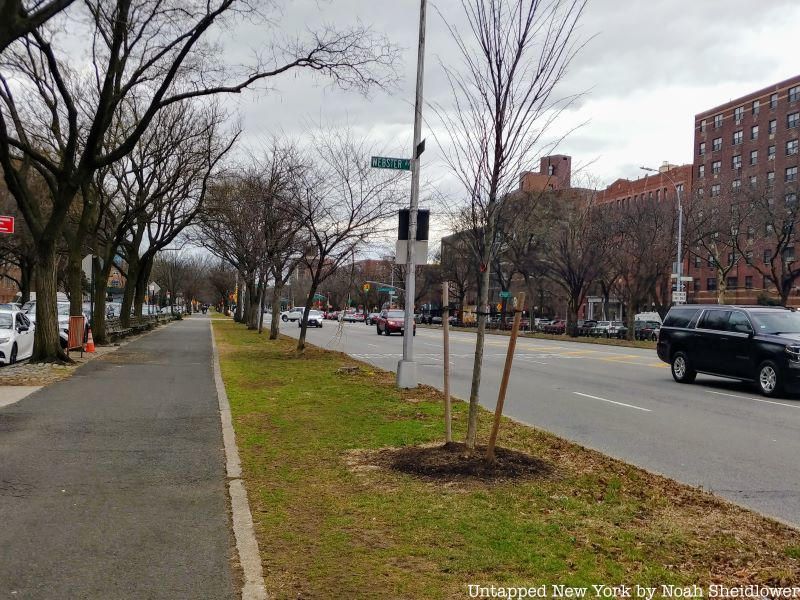
Ocean Parkway, one of Brooklyn’s quintessential roadways, stretches from Kensington just south of Prospect Park to Brighton Beach. Stretching just under five miles, Ocean Parkway starts at the Park Circle entrance to Prospect Park and runs roughly parallel to Coney Island Avenue. As early as 1866, Frederick Law Olmsted and Calvert Vaux, the masterminds behind Central Park and Prospect Park, suggested the creation of Ocean Parkway to connect Prospect Park with Coney Island. Early plans called for Ocean Parkway to have service roads divided by tree-lined medians. After gaining approval from the New York State Legislature, construction on the parkway began in 1874, and the stretch from Kensington to Kings Highway opened a year later. The remaining section opened in November 1876.
Improvements were made in the following years including the nation’s first bike path, installed in 1894. Around the turn of the 20th century, homes were constructed along Ocean Parkway, followed by mansions and apartment complexes. The eastern side of Ocean Parkway also featured bridle paths for horses, which could be rented by Prospect Park. The bridle paths were used for horse and sleigh races. Some horses also took the paths to the Brighton Beach Race Course and Gravesend Race Track for races. The paths were eventually removed in 1978 and were paved over. The parkway was designated a landmark in 1975, after which it was restored and repaved.

Buzz-a-Rama in Kensington was New York City’s last slot car racing venue. Buzz-a-Rama was opened in 1965 by Frank “Buzz” Perri (who got his nickname from his time as a high-jumper in high school) and his wife Dolores, both of whom passed away from Covid-19 in 2021. Frank and Dolores grew up in the neighborhood and spent their days at the venue showing adults and children how the cars worked. At the time it opened, Buzz-a-Rama was one of a few dozen locations in the city dedicated to the hobby, in which people race remote-controlled cars at high speeds. Despite a decline in the hobby due to competition from radio-controlled cars and video games, slot car racing still has organizations that sponsor and regulate competitions around the world. The trend died off further into the late 20th century, though Buzz-a-Rama remained strong.
The site, which was located at 69 Church Avenue, had five slot car courses inside with eight tracks each, surrounded by colorful swivel benches and chairs. The space also had old-school video games and pinball machines, as well as a “Refueling Center” in the back with three vending machines for snacks and drinks. Dolores told Untapped New York back in 2020, “This fella from California — he was all excited that he was able to come from California and you’re still here! And the memories!” In late 2021, their son Frank decided to sell the property and its merchandise, citing the increasing rent and the economic impacts of the pandemic.
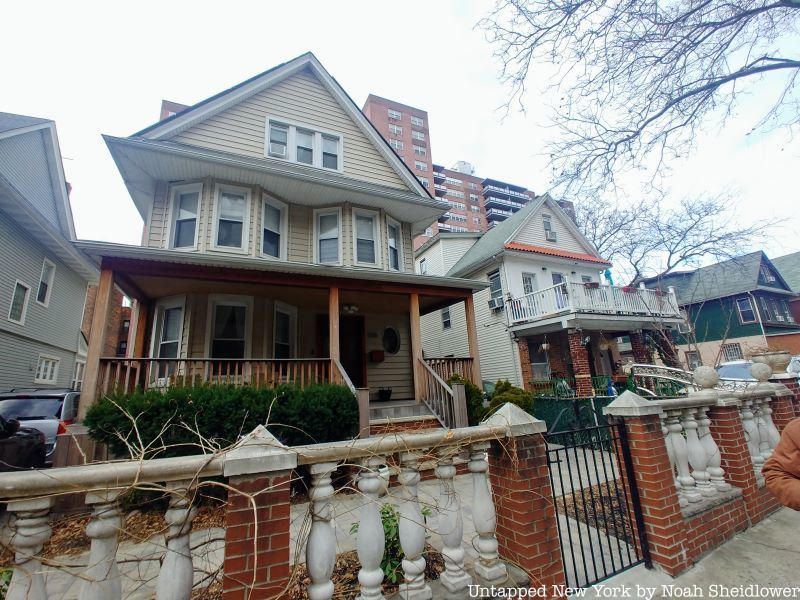
Though much of Kensington today is apartments – many of which replaced single-family homes along main thoroughfares like Ocean Parkway and Coney Island Avenue – there are still quite a few homes throughout the neighborhood. In addition to brick rowhouses, the neighborhood hosts many one-family Victorian homes, as well as American Foursquare houses. The American Foursquare style was popular between the 1890s and 1930s as a reaction to the more elaborate Victorian style. American Foursquare houses were much simpler and featured handcrafted woodwork, opposing the mass-produced mail catalog feel of many homes from that era. The style drew from Frank Lloyd Wright‘s Prairie style of dramatic horizontal lines.
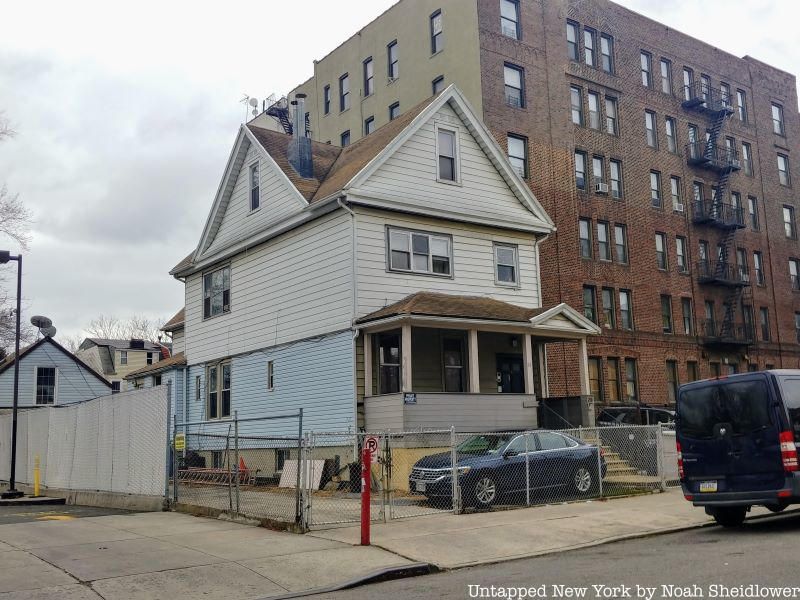
Many of the American Foursquare and Victorian homes are scattered throughout the neighborhood and stand right next to tall apartment buildings and rowhouses. In Parkville, some blocks seem to alternate between apartment buildings and houses, while other blocks only have detached homes in a mix of colors. A significant number of American Foursquare homes are located on the numbered streets off Beverley Road and Ditmas Avenue, some dating back over a century. Though many look to Ditmas Park for its Victorian architecture, Kensington’s historic homes are often overlooked.
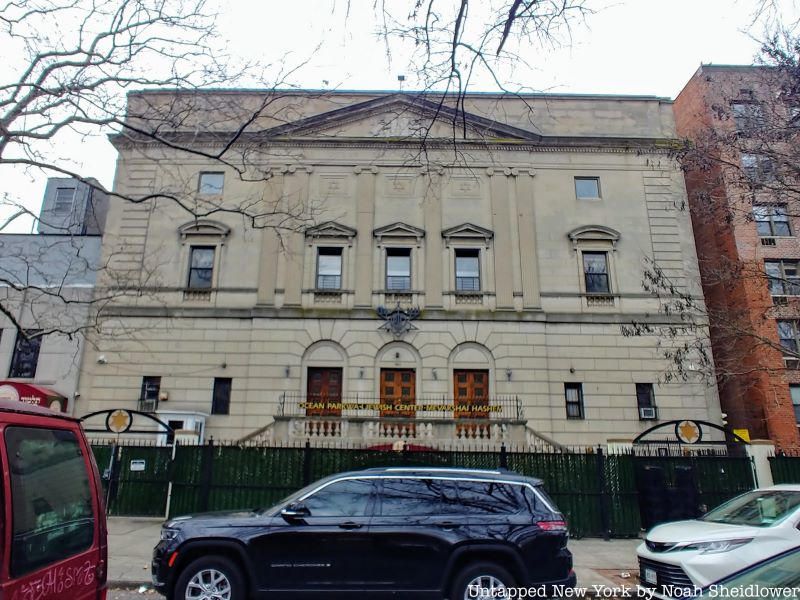
Orthodox Jews make up one of the predominant religious groups of Kensington who attend the many synagogues, yeshivas, and cultural centers in the neighborhood. These include Yeshiva Shaare Torah, Young Israel of Kensington, the Gorsky Havkazi Jewish Center, and Congregation Beis HaLevi. Ocean Parkway Jewish Center is one of the most historic in Brooklyn, dating back to 1924 and designed in the Neoclassical style. The cornerstone was placed by Mr. and Mrs. Louis Winkelstein on April 26, 1925.
The synagogue, which was added to the NRHP in 2009, was established in 1924 after the merging of the West Flatbush Jewish Center and the Congregation of Kensington. The building was completed in 1926, standing three stories tall with an attic and basement. Costing $450,000 at the time, the building includes an ornate front facade with three rounded-arch entrances. At the time, the synagogue was associated with the Conservative movement, though it more recently became Orthodox.
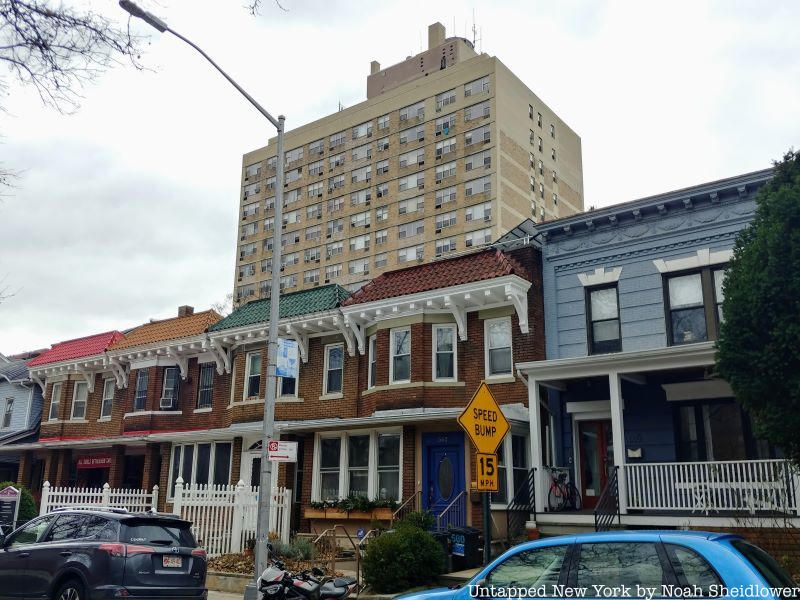
Today, Kensington has a very diverse population with a mix of Orthodox Jews, South Asians, Russians, and Caribbeans, as well as a small immigrant community from Darfur, Sudan. Its name, however, as with quite a few neighborhoods nearby like Windsor Terrace, comes from the British. Kensington takes its name from a western borough of London that also includes Chelsea and is immediately west of Westminster.
Kensington got its name after the completion of Ocean Parkway, after which many Irish and Italians moved into the neighborhood. Though no resident would be able to trace much British history to the area, British names are reflected in roadways like Beverley and Albemarle Roads, as well as in some apartment complexes. The British names were meant to connote an air of sophistication. The presence of many Victorian homes and some Tudor-style apartments reveal the area’s early attempts to resemble a British community. The Hindi and Urdu on Church Avenue, Yiddish and Hebrew on Ocean Parkway, and spots like the Russian spa house Brooklyn Banya now give the neighborhood a much more diverse feel.
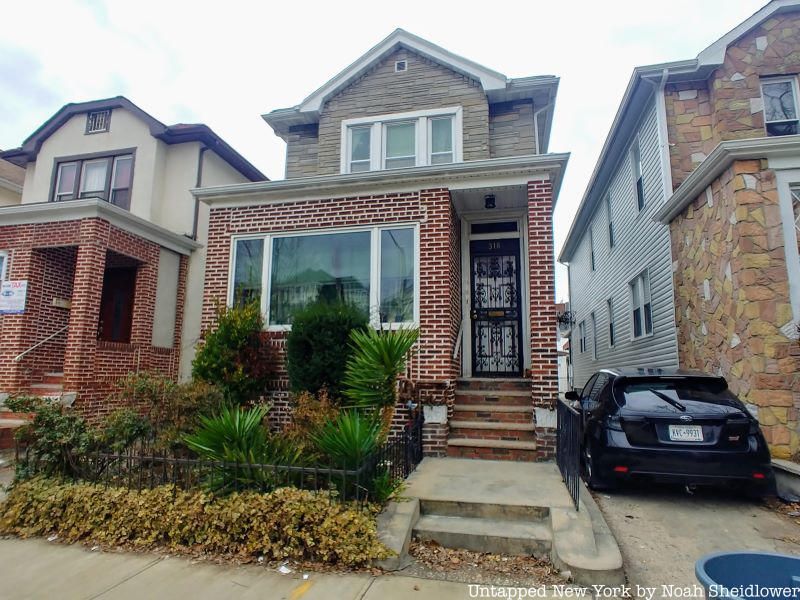
Kensington is not necessarily known for its famous residents, though a handful have called the quiet neighborhood home. One of the most famous is Sufjan Stevens, a singer-songwriter who has received Grammy and Academy Award nominations. Stevens gained fame for his mixed-medium project The BQE, named after the Brooklyn-Queens Expressway, which was commissioned by the Brooklyn Academy of Music for its New Wave Festival. Over the years, Stevens has collaborated with Brooklyn-based artists and musicians, such as Nico Muhly and Bryce Dessner on Planetarium. Stevens currently operates the record label Asthmatic Kitty Records from his Kensington home.
American drummer Marky Ramone (Marc Steven Bell) resided at 640 Ditmas Avenue throughout much of his childhood, attending school at Flatbush’s Erasmus Hall High School. He replaced Tommy Ramone in the Ramones in 1978 and has performed in other heavy metal and punk rock bands. Ramone now lives in Brooklyn Heights. Sid Luckman, a Hall of Fame quarterback with the Chicago Bears who led them to four NFL championships, lived at 318 East 8th Street. A number of leading Orthodox Jewish figures also have lived in Kensington.
Next, check out the Top 10 Secrets of Midwood!
Subscribe to our newsletter